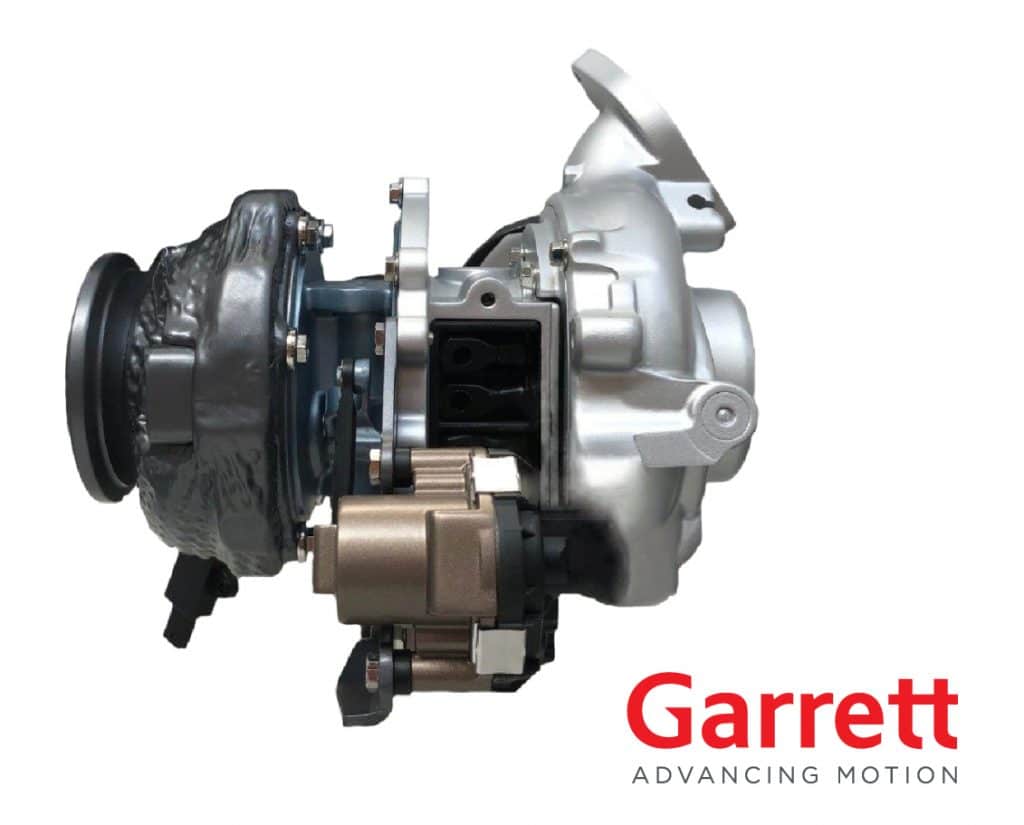In 2019 Garrett launches the first electric turbo in history
In Turbo3 we are official distributors of Garrett that is linked to the history of Turbos. In 2019 Garrett launches the first electric turbo in history. The world’s first “E-Turbo” for mass market passenger vehicles expected in 2021.
The announcement comes as automakers turn to electrified engine technology that meets industry challenges for greater energy efficiency and new regulatory emissions targets, while meeting consumer demands for better performance and vehicle affordability. While Garrett’s first E-Turbo application will emerge in premium performance vehicles, Garrett has 10 active programs in the world’s three largest automotive markets across different vehicle segments.
Turbochargers use otherwise wasted exhaust energy coming out of the tailpipe to drive a turbine wheel connected by a shaft to a compressor wheel. The compressor wheel collects more air in the engine, producing the now familiar “turbo boost” for vehicle acceleration. This has allowed automakers to use smaller, more efficient engines that help improve fuel efficiency and reduce carbon dioxide emissions without compromising performance.
Garrett’s E-Turbo keeps this basic concept but adds a small electric motor on the axle between the two wheels, allowing two new things to happen. First, the electric motor is able to roll up the turbo to provide boost immediately after idle, effectively eliminating the lag between when a driver steps on the gas and feels acceleration. Electrification of the turbocharger also removes design limitations that prioritize turbine efficiency at low engine speeds to drive the compressor. The addition of electrical power to compensate for low airflow allows Garrett to use a larger turbo that is better suited to the engine’s natural operating sweet spot.
Second and more exciting for the future of hybridization in all vehicle segments, the E-Turbo can electrically recover spent (and wasted) exhaust energy by using a small electric motor to generate electricity and recharge the battery. hybrid. This ability to be an on-board electricity supplier opens up options for automakers in the design of hybrid powertrains.
Garrett’s E-Turbo Gas Case Study
Garrett has been collaborating with a global automaker and other industry suppliers to demonstrate the capabilities of this new technology. Presenting at a conference in Germany in early 2019, Garrett engineers discussed various test processes that resulted in the E-Turbo outperforming the current smaller production turbo at all speeds. Most impressive was at low engine speeds (1500 rpm) where the target torque was reached in 1 second versus 4.5 seconds in the current production model.
Overall, the results indicated that the E-Turbo has the potential to improve basic engine performance in a manner consistent with future legislation requirements for fuel economy and emissions. In Garrett’s case study, power rating increased 16%, torque increased 10.5%, and time to go from 60-100km / h improved from 11 seconds to 8.8 seconds (-25%) .
Next generation software
Garrett’s new software also supports the performance and fuel efficiency potential of E-Turbo systems by integrating boost control algorithms into existing engine control modules (ECMs). Garrett software additions help optimize turbo performance, torque, efficiency and emissions. In addition, it also employs prognostic and intelligent diagnostic functionality to monitor the health status of the entire air circuit within the vehicle, as OEMs focus on all aspects of powertrain design to meet environmental standards every time. more strict.
Garrett’s software redefines the conventional ECM and turbo mechanical interaction by creating a new control subsystem for the E-Turbo. The ECM partner prepares the integration environment, including the interface and memory mapping, allowing Garrett engineers to apply the control code to the ECM and allowing the customer to independently calibrate the boost strategy.
Energy management is one of the fundamental pillars developed by Garrett on a technological path that leads to predictive energy management and powertrain optimization, as well as vehicle health management. Garrett’s world-class proven experience in handling multivariable controls addresses the added complexity of introducing electrical power to the vehicle and creating a more complex system with multiple objectives.













